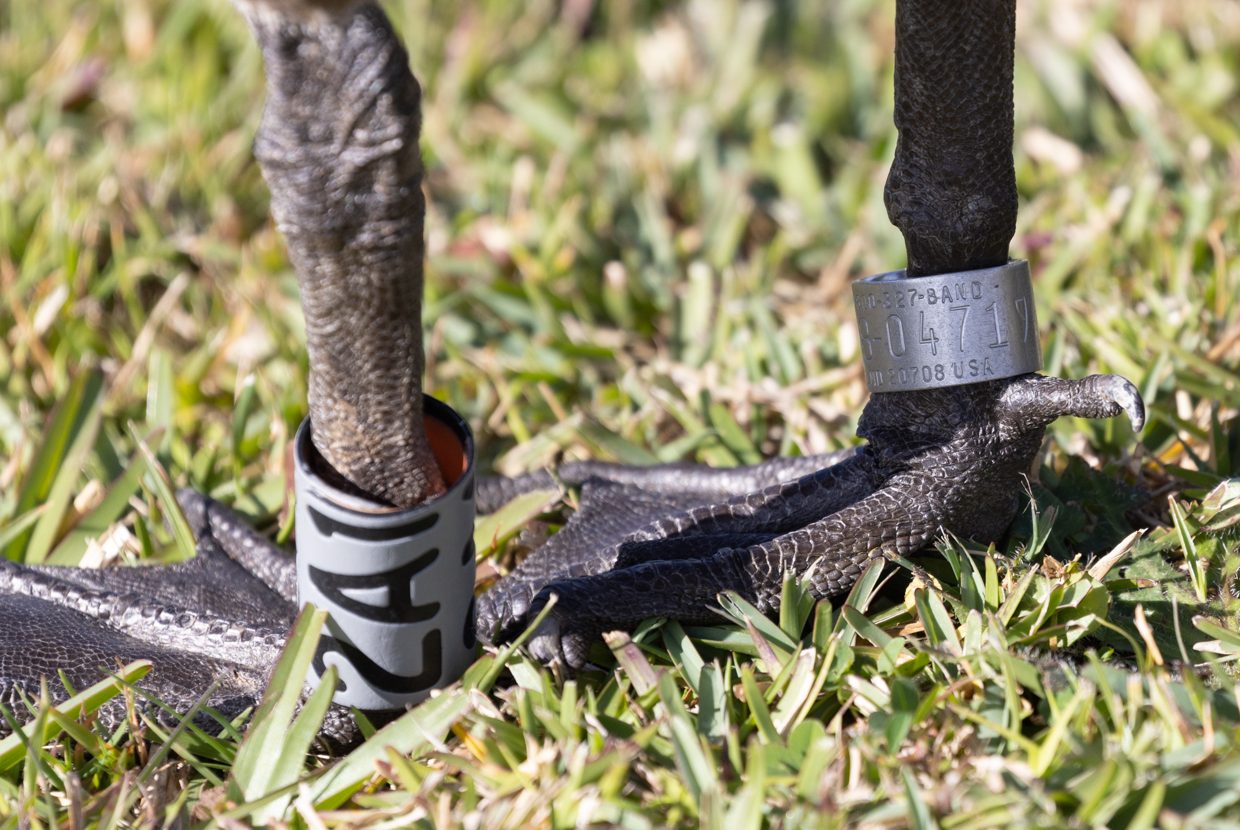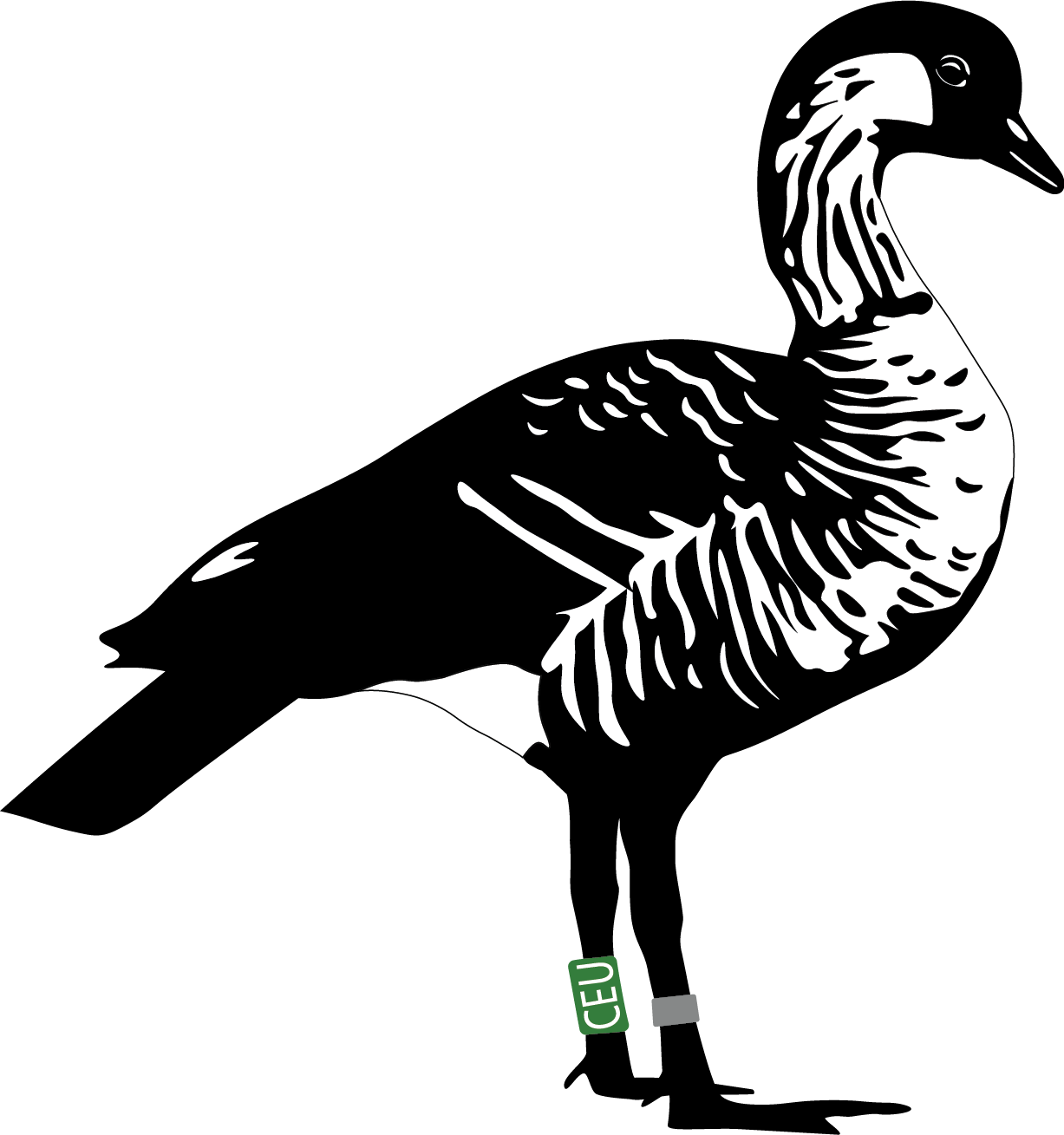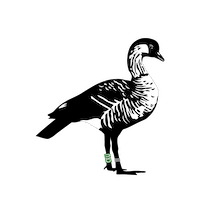
Did you see a banded nēnē?
What are these bands?
Nēnē in Hawaiʻi can have two types of leg bands. The first is a small metal band with nine-digits issued by the United States Geological Survey (USGS). The second is a larger band made from plastic with a unique 2-3 alphanumeric code. In general, the color of the band can make it easier for resource managers to identify where a bird was banded. The gender of a bird can sometimes be determined when being banded. In general, males have the colored band on their right foot and females will have it on their left. Both the metal and plastic bands can be damaged or lost over time. When this happens resource managers will sometimes capture the bird to affix new bands. This means that an individual can have different band codes throughout its lifetime. On Hawaiʻi Island we estimate that 14% of banded nēnē have lost their plastic bands. We also have <1% of banded nene retained their plastic bands but lost their metal bands. Calculating how often this happens is important for measuring the population size.
Be respectful when taking photos of Nēnē.
Collecting photo-identification data from banded nēnē is a non-invasive and respectful way to research this species. This method involves taking photos of the nēnē from a distance making sure to capture clear photos of the bands on their legs. This may involve using a telephoto lens to capture photos of the nene from a distance or using binoculars and writing down the band numbers separately. Nēnē are protected by State and Federal law so it is vital that you do not closely approach and disturb them. We recommend following local rules and regulations when photographing nēnē which includes staying at least 60 feet away in National Parks and State and Federal Wildlife Sanctuaries.
Hawaiʻi Endangered Species Rule: It is illegal to harass, harm, pursue, hunt, shoot, wound, kill, trap, capture, or collect nene, or to attempt to engage in any such conduct.
Migratory Bird Treaty Act: Under Section 703, nēnē are protected from harassment, which is defined as an intentional or negligent act or omission that significantly disrupts the normal behavioral patterns of the bird, including breeding, feeding, or sheltering, and creates a likelihood of injury or harm.
What do the different band colors mean?
Band colors generally refer to the location (island) where the nene was banded.
Kauaʻi
Blue
Orange
Yellow
Maui
Yellow
Gray
Hawaiʻi
Gray/White
Red
Green
Yellow

